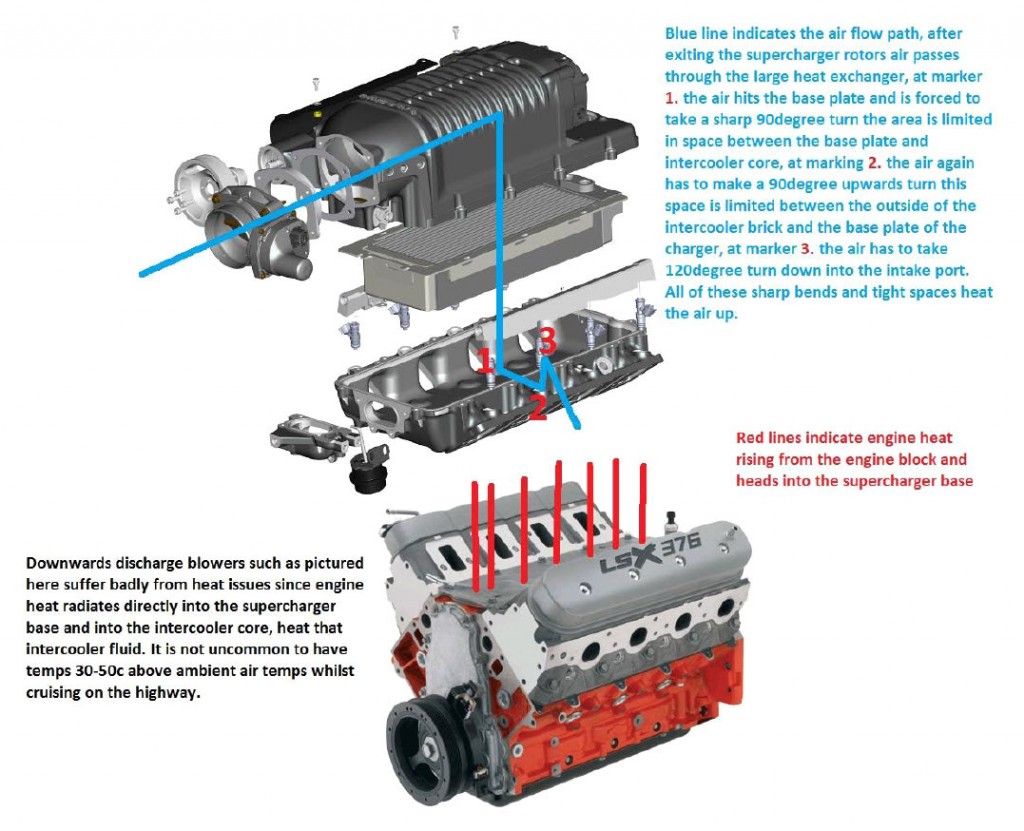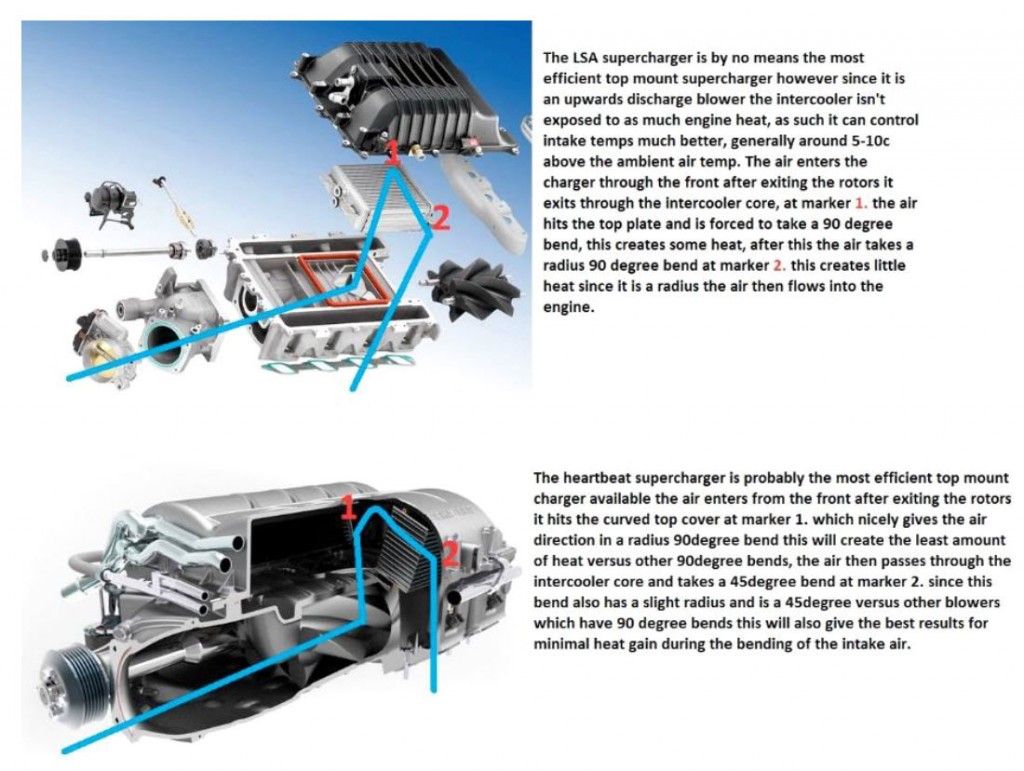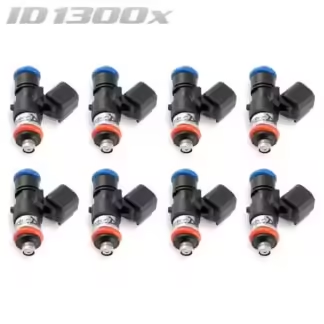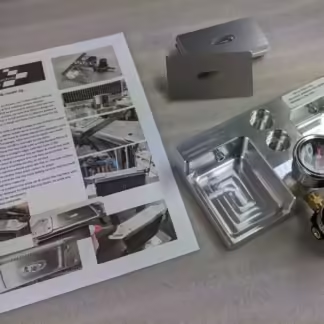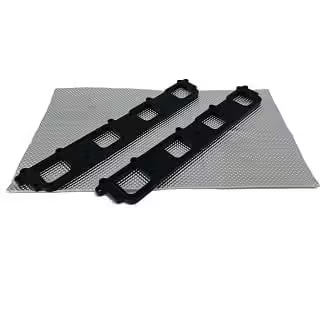LT1-LT2-LT4-LT5-L83-L86 Blower Spacer Plates
$411.90
- Dyno proven HP gains
- Custom O-rings on each intake port
- Isolate the supercharger from the engine
- Prevents heat soaking the blower
- Lowers intake temps
- Gain back ignition timing
- Stealth Installation
- Blower Spacer Plates Include: longer bolts, thermal reduction blanket and PCV valve extension
Lets isolate the blower from the motor to stop the absorption of 110c (230f) engine heat into the blower, sounds like a good idea? and the blower spacers were born.
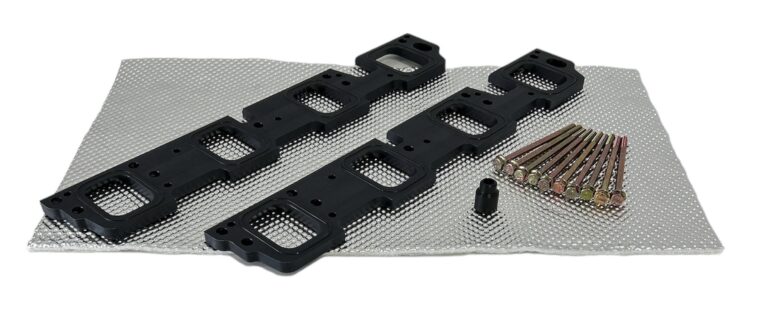
Revised design now suits: LT1, LT2, LT4, LT5, L83 and L86


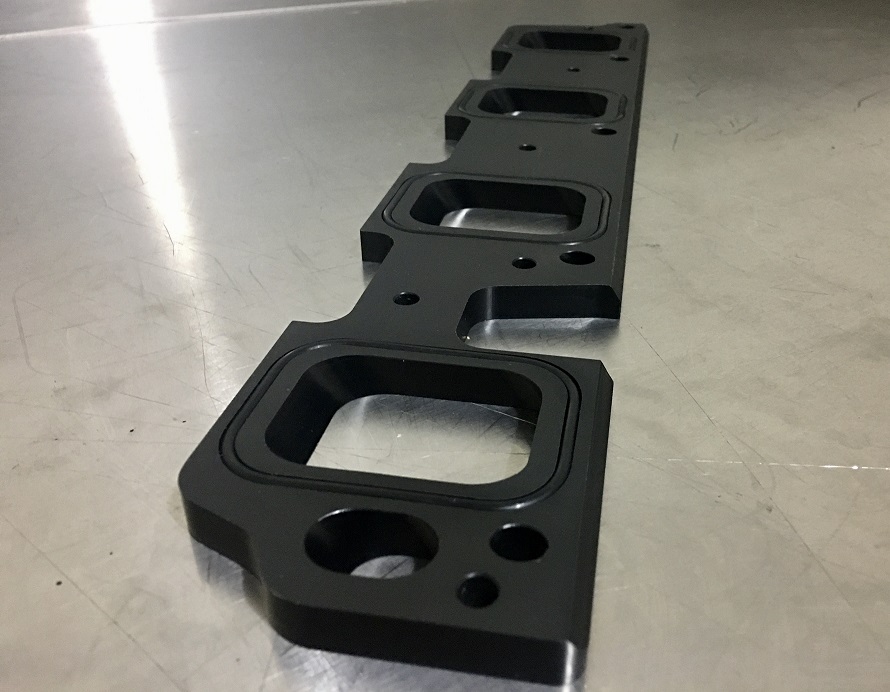
Thermal Reduction Blower Spacer Plates
Thermal reduction blower spacer plates featuring 1 piece custom o-rings help to reduce heat transfer caused by the supercharger sitting directly on the cylinder heads and spacing the charger up off the valley of the engine. The supercharger being in direct contact with the cylinder heads and sitting directly over the valley of the engine reduces thermal efficiency and heat is always the enemy in positive displacement superchargers. With the Thermal reduction plates the blower will operate significantly colder, reducing heat soak and increasing consistency. The air entering the combustion chamber will average lower temps and be denser, allowing a HP gain and when tuning more ignition timing thus again more HP.
What engines and Superchargers do the plates suit?
The plates will have a very dramatic effect on any LT1, LT2, LT4, LT5, L83 and L86 based supercharger especially downwards discharge style blowers as they suffer the most from heat soak, they also have a temperature reduction on upwards discharge blowers such as the magnuson Heartbeat. We have noticed with the LSA blower combined with our interchiller that that entire blower absorbs the cold temperature not just the intercooler core, this results in faster recovery times after wide open throttle and lower intake temperatures. So both upwards and downwards discharge blowers benefit from the spacer plates.
The plates suit LT1, LT2, LT4, LT5, L83 and L86 style cylinder heads the brand of supercharger will not matter, the plates are 10mm thick and will raise the blower up by 10mm so check to see if you have enough hood clearance before ordering, 10mm isn’t much so they should clear most cars. You may also require a slightly longer drive belt, in most cases your current belt tensioner will have enough room to allow the increased height otherwise a ½ size increase in belt length is adequate.
When the plates are combined with one of our interchillers the intake temperatures are reduced even further as efficiency is improved even further.
Downwards Discharge Blowers versus Upwards
Many people often give a cult following to certain brands of superchargers, however not many people have taken the time to look into how the superchargers intercooler system works and what effect one blower will have over another type.
With downwards discharge style blowers we have seen very high intake temps even on low boost and even whilst cruising on the highway not under boost, so much so one person was getting temps as high as 60c (140f) on a 30c (86f) day whilst on the highway not even in boost. So amazed at how high his temp was he called another shop and asked if they had the same.
The answer was on a 30c (86f) day they also see intake temps as high as 60-80c (140-176f) simply just cruising around not under boost.
These very high intake air temps will cause poor fuel consumption, ignition timing and HP loss/reduction, fuel vaporization and when you do enter boost EXTREMELY high intake air temps which can create a higher risk of engine knock which can result in engine failure if not tuned to remove very large amounts of ignition timing.
We have drawn up a couple of images to show you how this effect is taking place. This is your typical downwards discharger blower such as the Whipple, Walkinshaw, SLP, older style Magnuson and Harrop blowers.
Air flow path
Superchargers compared
Frequently Asked Questions
Click on a tab below to learn more about each item.


